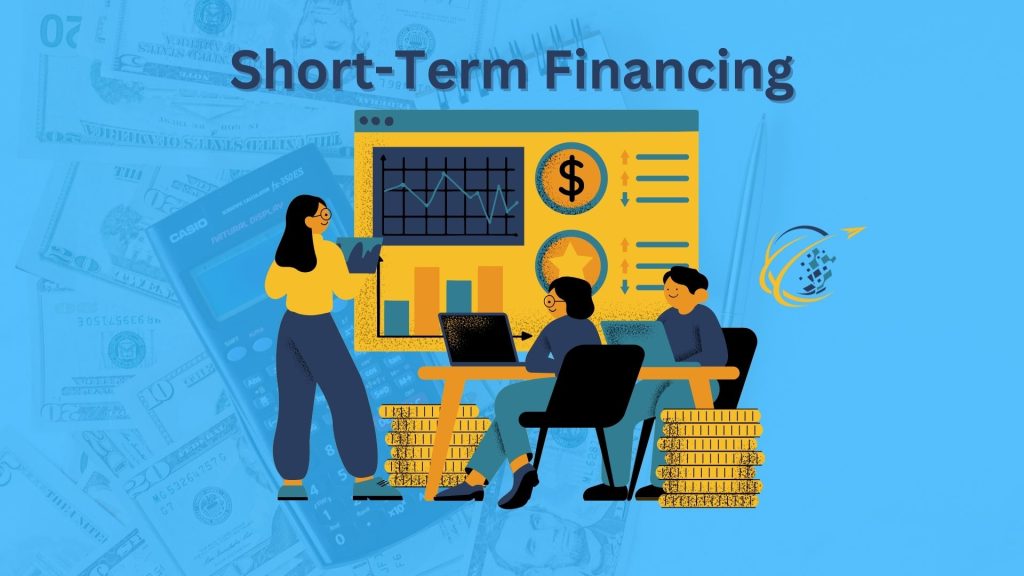Short-term financing for businesses plays a crucial role in helping companies address immediate financial needs while maintaining operational stability. Whether a business is looking to cover a shortfall in working capital, fund a new project, or manage seasonal fluctuations, short-term financing offers a practical solution. By understanding how short-term financing works and exploring the available options, businesses can improve their financial agility and ensure they have the resources to seize opportunities and overcome challenges.
What Is Short-Term Financing for Businesses?
Short-term financing for businesses refers to financial solutions designed to meet immediate needs, usually within a repayment period of one year or less. These financing options are typically used to cover operational costs, manage cash flow, or address unexpected expenses. Unlike long-term financing, which is often used for significant investments such as real estate or large equipment purchases, short-term financing is more flexible and tailored to a company’s immediate needs.
One of the key benefits of short-term financing is that it allows businesses to bridge gaps in their cash flow. For example, many businesses experience seasonal fluctuations where revenue might drop during certain months, while expenses remain consistent. Short-term financing ensures that companies can continue to meet their obligations, such as payroll and inventory purchases, without interruption.
Types of Short-Term Financing Options
There are several types of short-term financing for businesses, each suited to different financial situations. One of the most common forms is a short-term loan, which is typically issued by banks or alternative lenders. These loans are ideal for covering one-time expenses, such as purchasing inventory or funding a marketing campaign. Businesses receive a lump sum upfront and repay it over a set period, usually within a year.
Another popular option is a business line of credit. This type of financing provides businesses with access to funds up to a predetermined limit, similar to a credit card. Businesses only borrow what they need and repay the balance as they go, making it a flexible option for managing ongoing expenses. A line of credit can be particularly useful for addressing unexpected costs or taking advantage of short-term growth opportunities.
Invoice factoring is another form of short-term financing, where a business sells its accounts receivable to a third party at a discount in exchange for immediate cash. This option is ideal for businesses that need to improve their cash flow quickly but have outstanding invoices from clients. By converting invoices into cash, businesses can meet their obligations without waiting for customers to pay.
Merchant cash advances are another tool that businesses use to access quick funding. In this case, lenders provide a lump sum of cash in exchange for a percentage of future credit card sales. While merchant cash advances offer immediate capital, they often come with higher interest rates, making them a more expensive option compared to traditional loans.
Benefits
One of the most significant benefits of short-term financing for businesses is its ability to improve cash flow. Many businesses face situations where expenses arise before revenue comes in, such as when waiting for customers to pay invoices. Short-term financing helps bridge this gap, ensuring that businesses can maintain operations and avoid disruptions.
Another benefit is the flexibility that short-term financing offers. Because the repayment periods are shorter and often tailored to specific needs, businesses can avoid long-term debt and interest obligations. This flexibility makes it easier for businesses to manage their financial health without being locked into lengthy repayment plans.
Short-term financing can also be a valuable tool for seizing business opportunities. For example, if a company has the chance to buy inventory at a discounted price but lacks the funds, short-term financing allows them to take advantage of the opportunity without waiting for revenue to catch up. In this way, short-term financing enables businesses to be more agile and responsive to market conditions.
Risks and Challenges
While short-term financing offers numerous benefits, businesses must also consider the potential risks. One of the main challenges is the higher interest rates associated with short-term loans and merchant cash advances. Since the repayment period is shorter, lenders often charge higher rates to compensate for the increased risk. Businesses need to carefully evaluate the cost of financing and ensure that they can meet the repayment terms without negatively impacting their cash flow.
Another risk is over-reliance on short-term financing. While it’s an effective tool for addressing immediate needs, businesses should avoid using short-term loans to fund long-term projects. Using short-term financing inappropriately can lead to cash flow issues and create a cycle of debt. It’s essential to assess the purpose of the financing and choose the right type of loan for the business’s specific situation.
Additionally, businesses must ensure they have a clear repayment plan. Failure to repay short-term financing on time can result in penalties, damaged credit, and strained relationships with lenders. Before applying for financing, businesses should carefully review their financial projections and ensure they have a solid plan for repayment.
When to Consider Short-Term Financing
Businesses should consider short-term financing when they need to address an immediate financial challenge or seize an opportunity that requires quick capital. For example, businesses that experience seasonal revenue fluctuations can use short-term financing to cover operating expenses during slower periods. Similarly, companies that face unexpected equipment breakdowns can use short-term financing to make repairs or replacements without disrupting operations.
Short-term financing is also a useful tool for managing growth. If a business has an opportunity to expand but lacks the necessary capital, short-term financing can provide the funds needed to invest in new inventory, hire staff, or launch a marketing campaign. The key is to ensure that the growth will generate enough revenue to cover the cost of the financing.
Businesses should carefully evaluate their financial situation before seeking short-term financing. It’s important to consider the purpose of the loan, the repayment terms, and the overall impact on cash flow. By planning strategically, businesses can use short-term financing to strengthen their financial position and capitalize on opportunities.
The Importance of Short-Term Financing for Businesses
Short-term financing for businesses is a vital tool for managing cash flow, addressing immediate financial needs, and seizing growth opportunities. With a variety of options available, from short-term loans to lines of credit and invoice factoring, businesses can find the right solution for their specific needs. However, it’s essential to understand the costs and risks associated with short-term financing and to use it strategically. By making informed decisions, businesses can enhance their financial flexibility and maintain a healthy cash flow.


